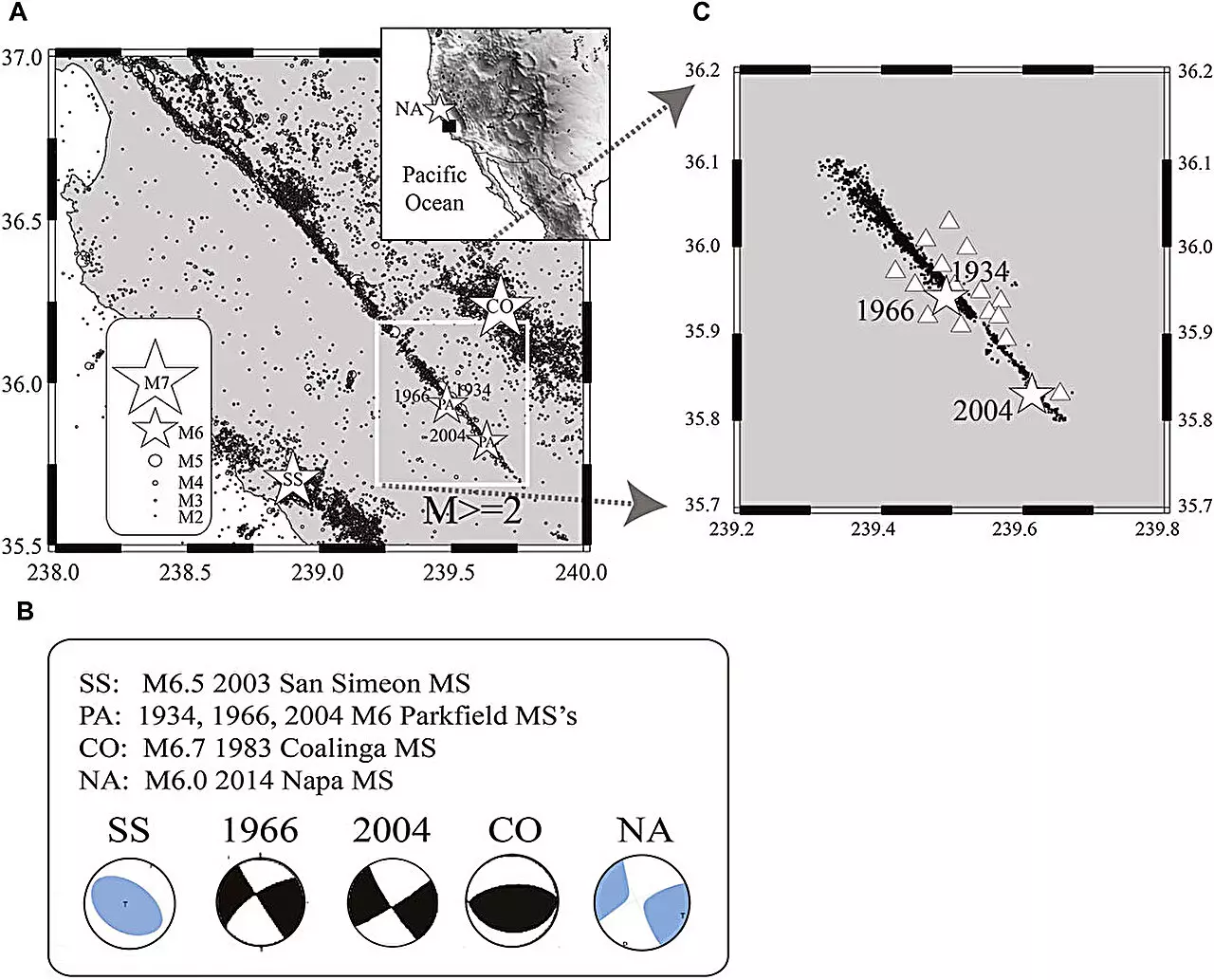Located near Parkfield, California, a part of the San Andreas Fault offers scientists a rare opportunity to study earthquakes. To the north of Parkfield, two major tectonic plates are continuously moving against each other, while to the south, the fault remains locked. This unique geologic setting results in a predictable earthquake pattern at the site, with earthquakes occurring approximately every 22 years. Researchers can collect valuable seismic data before, during, and after each earthquake, as they are almost always of similar magnitude, around 6 or slightly higher.
The absence of seismic signals indicating an impending earthquake near Parkfield has left researchers puzzled. Typically, prior to an earthquake, low-frequency waves diminish while high-frequency waves intensify. However, current seismic activity near the fault does not align with these patterns. Despite the expectation of a quake following the 2004 event, there are no clear indicators suggesting an imminent earthquake.
Although past earthquakes have occurred at Parkfield, with the most recent being in 2004, the lack of seismic activity poses a challenge in accurately predicting future events. The research team, consisting of Luca Malagnini, Robert Nadeau, and Tom Parsons, acknowledges the uncertainty surrounding earthquake forecasts in the area. While certain factors such as pressure buildup in adjoining fault segments may indicate a potential earthquake, the researchers do not express confidence in making precise predictions.
Implications and Caution
Given the unpredictability of earthquakes, especially in regions like Parkfield, where fault behavior is not entirely consistent, researchers refrain from making definitive forecasts. Instead, they emphasize the need for vigilance and preparedness in earthquake-prone areas. While the likelihood of an earthquake near Parkfield remains a topic of interest and concern, the sparse population in the vicinity alleviates immediate risk to human life. As the scientific community continues to monitor seismic activity in the area, the importance of studying complex fault systems for disaster mitigation becomes increasingly apparent.



Leave a Reply